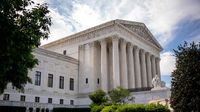On Tuesday, July 8, 2025, the U.S. Supreme Court cleared the way for the Trump administration to resume large-scale layoffs and reorganizations across multiple federal agencies, temporarily lifting a lower court injunction that had blocked these efforts. This ruling allows federal agencies to move forward with reductions-in-force (RIFs) under an executive order issued by President Donald Trump earlier this year, even as legal challenges continue to unfold in the courts.
The Supreme Court's decision came in an unsigned order granting the government’s request to stay a preliminary injunction issued by U.S. District Judge Susan Illston of the Northern District of California. Illston had halted the administration’s plans, ruling that the executive order and related guidance from the Office of Management and Budget (OMB) and the Office of Personnel Management (OPM) likely exceeded the president’s authority by mandating sweeping workforce reductions without congressional approval.
The executive order, signed on February 11, 2025, established the "Department of Government Efficiency" Workforce Optimization Initiative, directing federal agencies to "promptly undertake preparations to initiate large-scale reductions in force, consistent with applicable law." It sought to eliminate what the administration described as "waste, bloat, and insularity" within the federal government. The accompanying memorandum accused the government of being "costly, inefficient and deeply in debt," blaming "unproductive and unnecessary programs that benefit radical interest groups."
Under the plan, agency heads were required to submit layoff proposals to OMB and OPM within two weeks, with tools for staff reduction including limits on new hires, removal of underperforming employees, and allowing temporary positions to expire without renewal. Military personnel were exempted, but virtually every other federal agency was affected.
The Trump administration argued that the executive order fell within the president’s constitutional authority to manage the executive branch and that no additional congressional authorization was needed to conduct such workforce reductions. Solicitor General D. John Sauer told the Supreme Court that the injunction "inflicts ongoing and severe harm on the government" by interfering with the executive branch’s operations and legal authority to plan and carry out RIFs across the government.
However, labor unions, advocacy groups, and several local governments challenged the executive order in court, arguing that the president had overstepped his constitutional bounds by attempting to dismantle and reorganize federal agencies unilaterally, without congressional consent. The American Federation of Government Employees (AFGE), alongside nonprofits and municipalities from California, Texas, Illinois, and other states, filed suit, warning that the mass layoffs could result in "hundreds of thousands of federal employees losing their jobs" and that critical government services would be jeopardized.
Judge Illston had temporarily blocked the executive order’s implementation, emphasizing that nine presidents over the past century—across party lines—had sought and obtained congressional approval before undertaking major agency reorganizations. She wrote that Presidents George W. Bush, Barack Obama, and Trump himself during his first term had all pursued such authority but were denied. Illston noted that the administration’s unilateral approach disregarded the separation of powers and risked irreversible damage to government functions.
The 9th U.S. Circuit Court of Appeals upheld Illston’s injunction, but the Supreme Court’s majority stepped in to stay that ruling, allowing the administration to proceed with its plans while the legal battles continue. The justices emphasized that their order did not address the legality of any specific RIF or reorganization plan, stating, "We express no view on the legality of any Agency RIF and Reorganization Plan produced or approved pursuant to the Executive Order and Memorandum."
Justice Sonia Sotomayor, one of the court’s liberal justices, concurred with the majority. She agreed that presidents cannot restructure agencies in ways inconsistent with congressional mandates but noted that the executive order instructed agencies to operate "consistent with applicable law." She wrote, "The plans themselves are not before this Court, at this stage, and we thus have no occasion to consider whether they can and will be carried out consistent with the constraints of law," leaving the district court free to make those determinations.
In stark contrast, Justice Ketanji Brown Jackson issued a sharp 15-page dissent. She criticized the majority for "greenlighting this President’s legally dubious actions in an emergency posture," warning that the ruling permitted an "unprecedented and congressionally unsanctioned dismantling of the Federal Government to continue apace, causing irreparable harm before courts can determine whether the President has the authority to engage in the actions he proposes." Jackson called the decision "truly unfortunate," "hubristic," and "senseless," underscoring that the district court was best positioned to evaluate whether the executive order constituted a minor workforce reduction or a massive restructuring requiring congressional approval.
The ruling sparked immediate reactions from various stakeholders. The coalition of unions, nonprofits, and local governments that challenged the executive order condemned the Supreme Court’s decision as "a serious blow to our democracy." Their joint statement emphasized that "reorganizing government functions and laying off federal workers en masse haphazardly without any congressional approval is not allowed by our Constitution," and warned that the decision "puts services that the American people rely on in grave jeopardy." They pledged to continue fighting to protect critical public services.
Maryland Governor Wes Moore highlighted the local economic impact, stating that "any action against our federal employees is a direct strike against Maryland’s people and economy," noting that thousands of Maryland residents had already been laid off under the Trump administration. Congressional leaders echoed concerns, with Representative Steny Hoyer condemning the administration for "vilifying and traumatizing the patriots serving our nation" and Representative Jamie Raskin warning that the ruling "will give Trump’s wrecking crew more awful ideas about sacking critical federal workers," citing layoffs at the National Weather Service and NOAA.
Senator Chris Van Hollen warned that the layoffs could "decimate essential public services" such as food inspections and Social Security, quoting Justice Jackson’s dissent to say the decision was "the wrong decision at the wrong moment, especially given what little this Court knows about what is actually happening on the ground." He criticized the administration’s plan as "rigging the government to only benefit the wealthy and powerful special interests."
Federal agency employees themselves expressed grief, despair, and anger following the ruling, sharing fears for national security and their families. Some recalled decades of dedicated service, often in dangerous postings, while others simply said they felt sickened by the prospect of mass layoffs.
Not all agencies are moving forward uniformly. The Department of Veterans Affairs announced it would reduce staff by nearly 30,000 through retirements and attrition, foregoing a larger forced reduction. Meanwhile, the State Department planned to proceed with a 15 percent staff cut after delaying mass dismissals pending the Supreme Court’s decision. Certain subagencies within the Department of Health and Human Services remain protected by a separate preliminary injunction.
White House spokesman Harrison Fields hailed the Supreme Court’s ruling as "another definitive victory for the President and his administration," asserting that it "clearly rebukes the continued assaults on the President’s constitutionally authorized executive powers by leftist judges who are trying to prevent the President from achieving government efficiency across the federal government." Attorney General Pam Bondi echoed this sentiment, tweeting that the decision stopped "lawless lower courts from restricting President Trump’s authority over federal personnel" and that "federal agencies can become more efficient than ever before."
Despite the Supreme Court’s stay, the legal battle is far from over. The district court will continue to review the plans’ legality, and further appeals are expected. The case highlights the ongoing tension between executive authority and congressional oversight, raising profound questions about the balance of power in managing the federal workforce and the future of public services Americans rely on daily.






